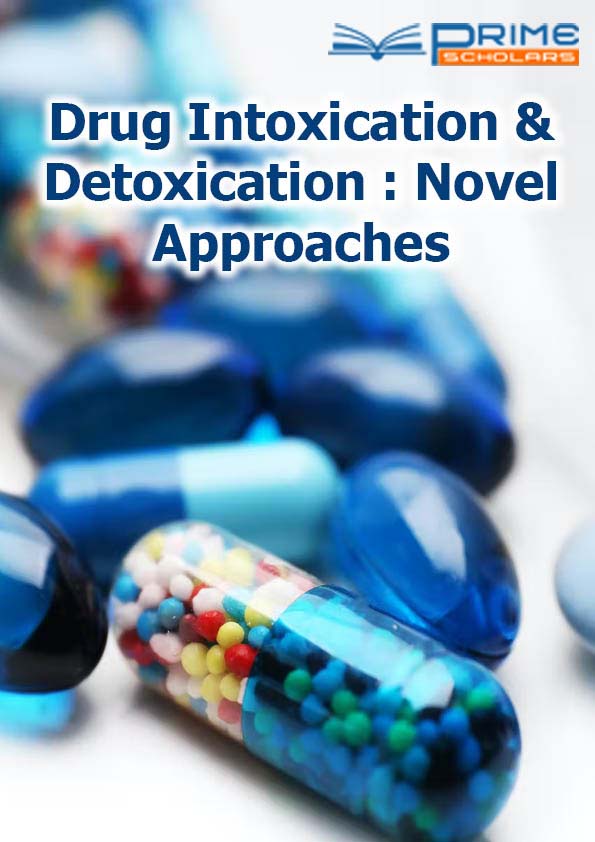Perspective - (2023) Volume 4, Issue 2
Medical Advantages of Methylxanthines in Cacao and Chocolate
Rafael Franco*
Department of Biochemistry and Molecular Biology, University of Barcelona, Spain
*Correspondence:
Rafael Franco,
Department of Biochemistry and Molecular Biology, University of Barcelona,
Spain,
Email:
Received: 31-May-2023, Manuscript No. DIDNA-23-16835;
Editor assigned: 02-Jun-2023, Pre QC No. DIDNA-23-16835 (PQ);
Reviewed: 16-Jun-2023, QC No. DIDNA-23-16835;
Revised: 21-Jun-2023, Manuscript No. DIDNA-23-16835 (R);
Published:
28-Jun-2023, DOI: 10.36648/DIDNA 4.2.15
Introduction
Xanthines are a variety of compounds released by plants and
organisms, usually concentrated in various digestive substances
such as ATP and GTP. Interestingly, these mixtures belong to
the group of purines and are produced by all human cells. To
be honest, xanthine and its daughter substances are intermediates
in the production of her GMP, Gross Domestic Product,
and GTP in cells dependent on rescue pathways that convert
degradation intermediates into her GTP and nucleic acids. Similarly,
xanthine plays a role in nucleotide and nucleic acid catabolism,
as it is a precursor of uric acid, which is ultimately produced
by purine catabolism. Anabolic and catabolic digestion
involving xanthines intersect.
Description
Xanthine binds to binding sites from which GTP and nucleic
acids are bound by the rescue system or uric acid is formed
and excreted in the urine. Curiously, the benefits of xanthines
found in cocoa have nothing to do with anabolic or catabolic
purine digestion in humans. The dynamic mixture of cocoa is
predominantly xanthines-like, but methylxanthines, and their
effects on human physiology are very pronounced. Most shoppers
are unaware that the psychoactive effects produced by cocoa,
coffee, or tea consumption are due to a lack of adenosine
receptors. Flavonols and methylxanthines are the most characteristic
dynamic components of cocoa. Flavonols are polyphenolic
structures found in cocoa, including catechins and their
byproducts, B2, B3 and C1 procyanidins. The delayed interest in
these builds is due to their cancer-fighting properties. Recently
investigated their potential benefits for human health. Among
the many possible health benefits of cancer prevention, calming
activities seem to be among the most reassuring. In fact, flavonols inhibit lipid peroxidation and influence the formation
of lipids or lipid-determined particles that cause resistance reactions.
Dietary cocoa was recently shown to ameliorate obesity-
associated irritability in high-fat mice. These particles also
appear to be critically involved in the proliferation of beneficial
gastric microbes (such as lactobacilli) and the reduction of less
beneficial microbes (such as Clostridia) after cocoa consumption.
Hayek recently returned with information showing that
cocoa and chocolate alter digestive structures in a manner similar
to prebiotics and probiotics. Some of the benefits of cocoa
are partly due to this complexity, as the actual linkage between
the gastric microbiota and gastric digestion has indeed been
confirmed in several studies, resulting in improved health may
be due to various factors. Further research is needed on the
potential health benefits of flavonols in cocoa. This research
then focuses on methylxanthines. Methylxanthines are found
in high concentrations in cocoa and cocoa-based products.
Prioritize action to speedily overcome the blood-mind barrier;
have been thoroughly studied from a physiological and clinical
point of view.
Conclusion
The advantages of standardized mixtures is that they are unique
and do not induce drug dependence, so they can be taught to
patients in preliminary clinical examinations and supervised
examinations by medical professionals. In a recent report comparing
varying amounts of theobromine (250 mg to 1 g) with a
single serving of caffeine (200 mg) may contribute to the effect
of, but the effect may be negative when the intake level is high.
Apart from the fact that theobromine promotes health when
used most heavily in humans, developers have discovered that
theobromine has effects similar to caffeine.
Citation: Franco R (2023) Medical Advantages of Methylxanthines in Cacao and Chocolate. Drug Intox Detox: Novel Approaches.
4:15.
Copyright: ©2023 Franco R. This is an open-access article distributed under the terms of the Creative Commons Attribution
License, which permits unrestricted use, distribution, and reproduction in any medium, provided the original author and source
are credited.
